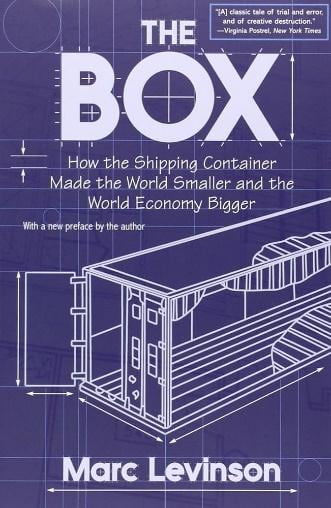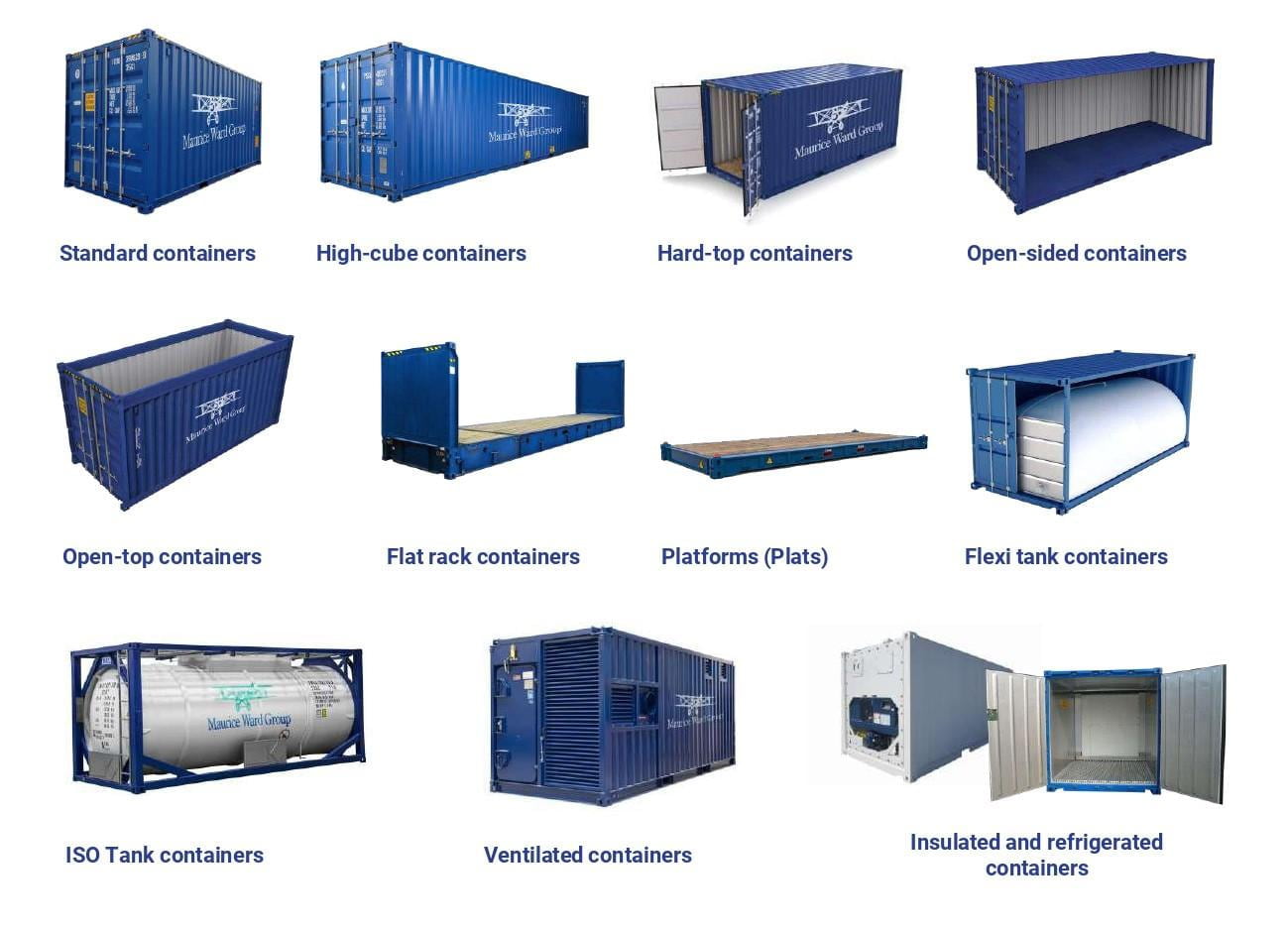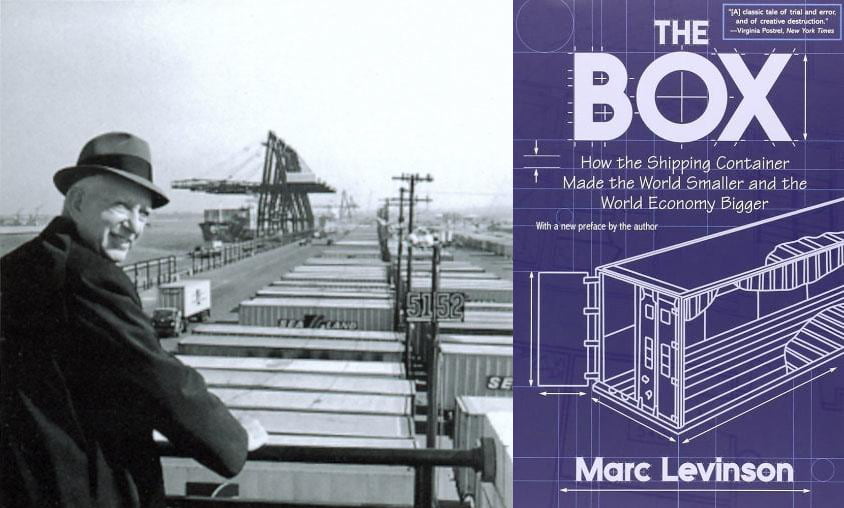The Box that Changed the Shipping World
Have you ever stopped to think about just how much the humble shipping container has completely transformed our modern world?
April 17, 2024
Have you ever stopped to think about just how much the humble shipping container has completely transformed our modern world? The container on its own is a relatively simple metal box, but when used as a part of a vast interconnected, and efficient transportation network, it has made the costs of worldwide shipping so simple and so cheap. This is the story of how the container took over the world.
Just 40 to 50 years ago the concept of containers and container shipping was small and niche in the world of cargo transportation. Rather than loading and unloading pre-filled containers, cargo ships, would fill their holes with loose arrangements of whatever needed to be shipped. This method of transportation known as breakbulk cargo, however, was riddled with inefficiencies and delays. So Mark Levinson, the author of the book “The Box: How the Shipping Container Made the World Smaller and the World Economy Bigger” implied the following:
“Perhaps the remedy lies in discovering ways of packaging, moving and stowing cargo in such a manner that breakbulk is avoided”

Well, it turns out the answer would come from somebody who had no experience in the maritime industry at the time. His name was Malcolm McLean. McLean had a road freight company at the time and wanted to speed up ship-loading and unloading for his company. His initial idea, now RoRo transport, involved ships carrying lorries. However, the “trailer ships” at the time were deemed inefficient due to wasted cargo space.
Thus, the original idea evolved to loading only containers onto ships, giving rise to the term “container ship” or “box” ship. McLean then sold his company, secured a bank loan, and founded Sea-Land Corporation to pursue this concept. In January 1956, McLean purchased two World War II T-2 tankers and converted them to carry containers both on and under the deck.
Finally, on April 26th, 1956, the SS Ideal-X departed from Port Newark-Elizabeth Marine Terminal in New Jersey bound for the Port of Houston in Texas. Laden with fifty-eight 35-foot Trailer Vans (later known as containers) and regular liquid tank cargo, marked the maiden voyage of container shipping.
Following the first voyage, McLean’s container shipping enterprise expanded rapidly, with increased routes and larger vessels. Even so, the industry couldn’t change itself and it took a decade for the first container ship to sail in Europe. The pivotal moment arrived when the U.S. Government invited McLean’s company to initiate a container service to South Vietnam.
By the time the Vietnam order arrived, Sea-Land wasn’t the only company offering shipping container services. To secure the contract, McLean had to change his former 35-foot containers and find a size compatible with trains, lorries, and ships.
Believing that standardization was the path to overall industry growth, McLean chose to make his patents available by issuing a royalty-free lease to the Industrial Organization for Standardization (ISO).
Thus, the modern shipping container has revolutionized not only the transportation industry but also global supply chains, impacting economies worldwide. Without them, many countries would struggle to participate in international trade, leading to increased costs for consumers and a less connected global economy.
The shipping container is the most overlooked “technology” of the last millennium. This humble 40’ steel box revolutionized the industry, turned train, truck, and shipping economics on its head, revitalized coastal ports, and raised the standard of living for people globally.
Maurice Ward Group is proud to be an integral part of this global chain, contributing to its continued success and evolution.
The 6 common types of shipping containers include standard containers, high-cube containers, refrigerated containers, flat-rack containers, open-top containers, and tank containers.
Cargo can be categorized into various types based on its nature, characteristics, and mode of transportation. Here are some common types of cargo:
Containerized Cargo: Containerized cargo is goods that are packed and transported in standardized containers, such as dry vans, reefers, flat racks, or open tops.
Bulk Cargo: Bulk cargo refers to commodities that are transported unpackaged in large quantities, either loose or in bulk form.
Roll-On Roll-Off: Commonly called RO-RO, this is any cargo that has to be rolled on and rolled off the vessel. When loading the cargo on, they can be self-driven, towed, wheeled, or placed in a roll-trailer.
Liquid Cargo: Liquid cargo includes various types of liquids transported in bulk. Liquid cargo is typically transported in specialized tank containers, tank trucks, or tankers designed to safely handle specific types of liquids.
Project Cargo
Project cargo vessels are specially designed and built to transport large, heavy, and often sensitive cargo that requires special handling. Project cargo vessels come in a variety of sizes and configurations, but all are designed to accommodate oversized and/or difficult-to-handle cargo.
The 40ft container is twice as big as the more standard 20ft container. Each of our different types of containers comes in 40 feet.
| TYPE OF CONTAINER | INSIDE LENGTH | INSIDE WIDTH | INSIDE HEIGHT |
| 40’Flat Rack | 11.66 m | 2.22 m | 1.94 m |
| 40’Open Top | 12.03 m | 2.34 m | 2.33 m |
| 40’Pallet Wide | 12.10 m | 2.44 m | 2.38 m |
| 40’Pallet Wide High Cube | 12.10 m | 2.44 m | 2.69 m |
| 40’High Cube Reefer | 11.57 m | 2.29 m | 2.54 m |
| 40’Standard | 12.03 m | 2.35 m | 2.39 m |
| 40’High Cube | 12.10 m | 2.35 m | 2.68 m |
The 20′ container is the most popular worldwide. It is also the smallest container within the standard dimensions, and it is often used for heavy loads, such as machinery and raw materials e.g., iron or similar used in the building and construction industry. But it is also used for transporting ordinary consumer goods and products.
A 20-foot container measures 5.90 meters in length, 2.35 meters in width, and 2.39 meters in height. The tare weight is 2,300 kilos. The payload is the maximum loading capacity, which is 28,200 kg on a 20 ‘container.

The first ever ‘cargo only’ flight was recorded in November 1910 in the USA, using a Wright Model B aeroplane that flew 65 miles carrying a package of silk. The business owner used the pioneering transport more as a PR stunt to celebrate the opening of his store, with the bundle of silk cut into individual pieces and glued onto souvenir postcards.

Have you ever stopped to think about just how much the humble shipping container has completely transformed our modern world?

The Maurice Ward Austria team celebrated Sung Ae Han’s (Country Manager Austria) 10th anniversary on February 10th, 2024, coinciding with the celebration of the Chinese New Year.

Maurice Ward Group (MWG) a Privately Owned, Independent Regional Forwarder established in Ireland (1968) today announced the acquisition of Air Tech Kargo Turkiye.
Maurice Ward Group is the term used to identify collectively all Maurice Ward companies. These companies are each separate legal entities acting for their own risk and account or their principals. They can only bind themselves and the other Maurice Ward entities are not liable for their actions. The use of the term Maurice Ward Group on this website or by any of the other Maurice Ward companies in any document or mean of communication is for practical reasons only.
| Cookie | Duration | Description |
|---|---|---|
| VISITOR_INFO1_LIVE | 5 months 27 days | A cookie set by YouTube to measure bandwidth that determines whether the user gets the new or old player interface. |
| YSC | session | YSC cookie is set by Youtube and is used to track the views of embedded videos on Youtube pages. |
| yt-remote-connected-devices | never | YouTube sets this cookie to store the video preferences of the user using embedded YouTube video. |
| yt-remote-device-id | never | YouTube sets this cookie to store the video preferences of the user using embedded YouTube video. |
| yt.innertube::nextId | never | This cookie, set by YouTube, registers a unique ID to store data on what videos from YouTube the user has seen. |
| yt.innertube::requests | never | This cookie, set by YouTube, registers a unique ID to store data on what videos from YouTube the user has seen. |
| Cookie | Duration | Description |
|---|---|---|
| pll_language | 1 year | The pll _language cookie is used by Polylang to remember the language selected by the user when returning to the website, and also to get the language information when not available in another way. |